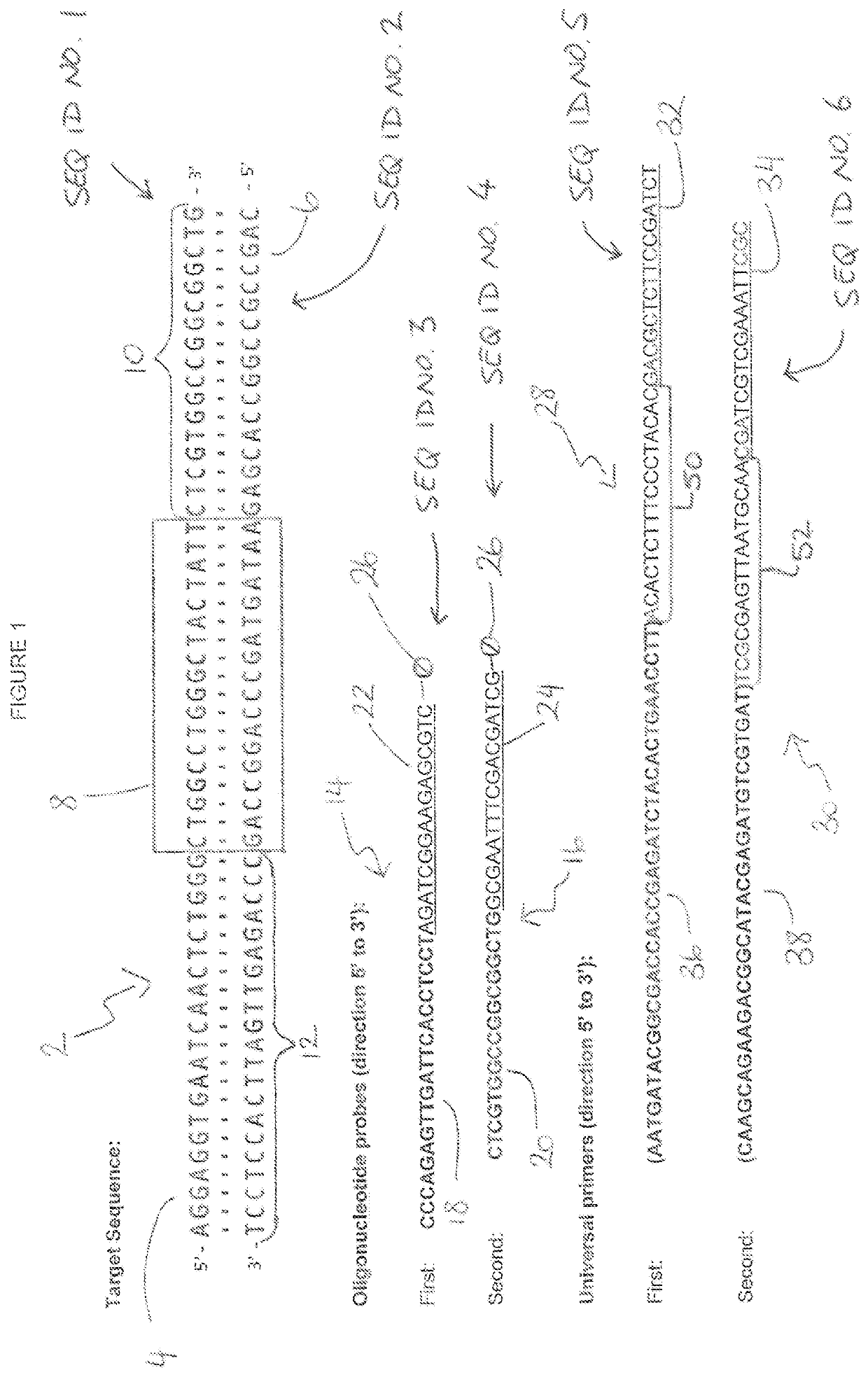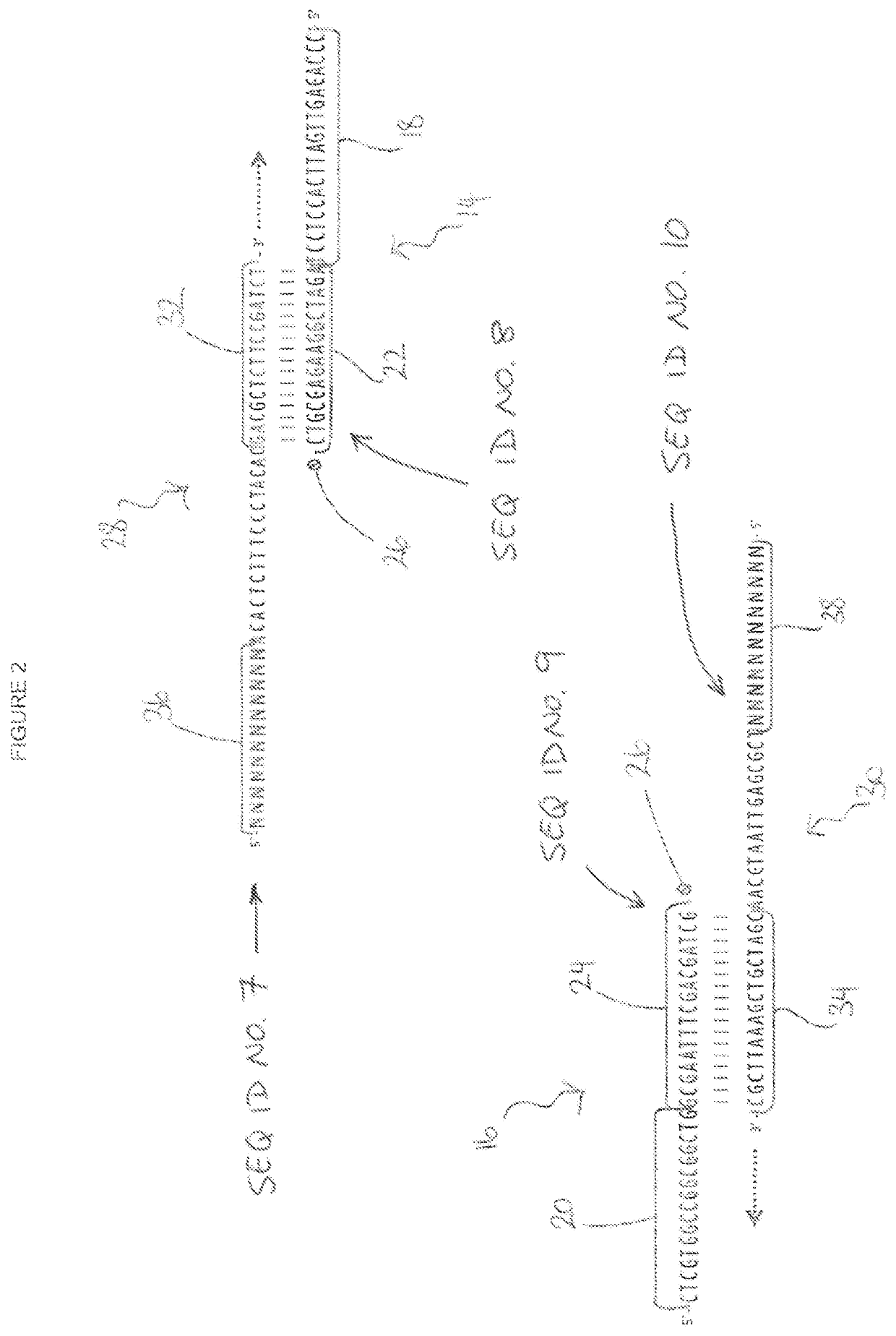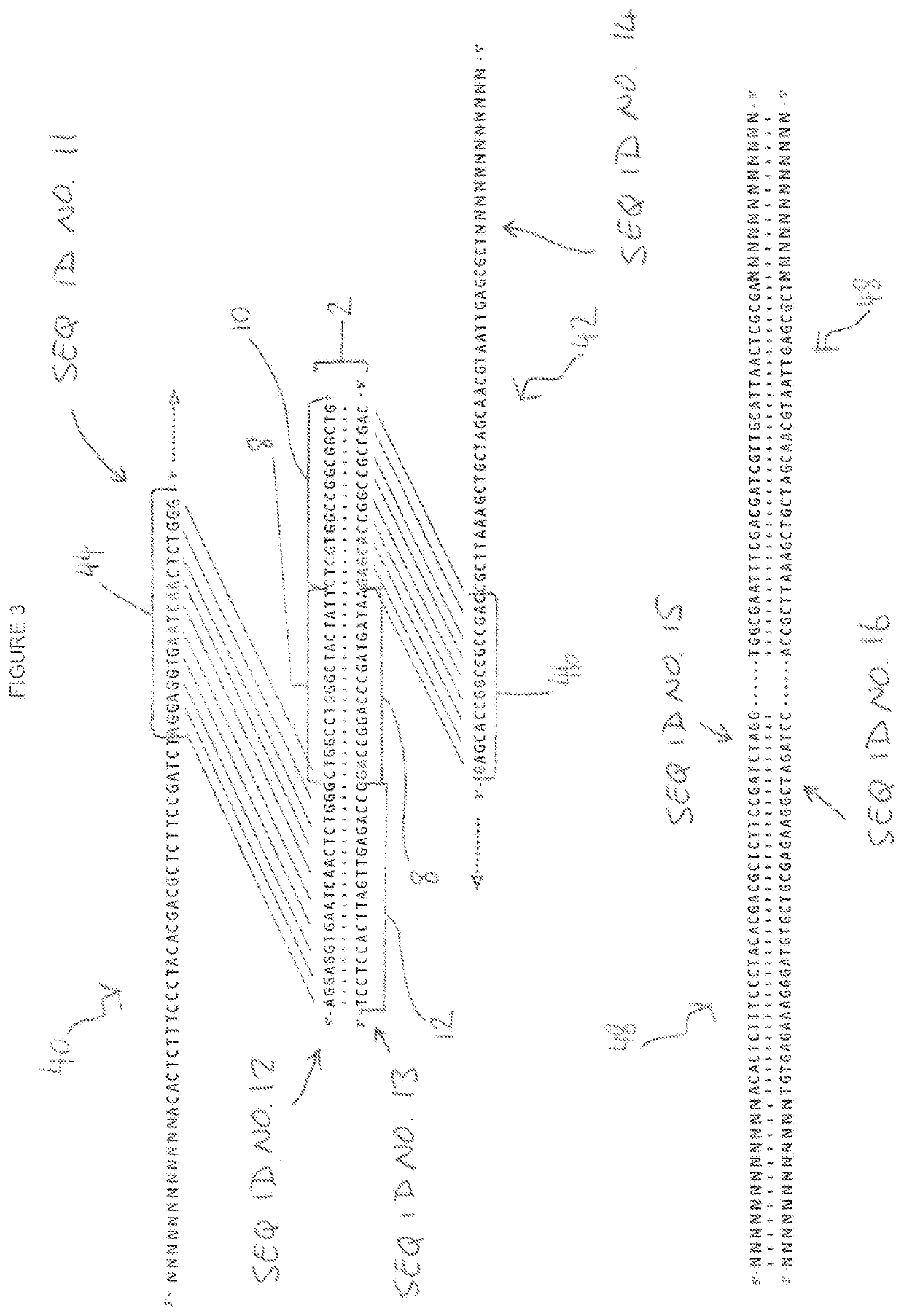PCR method
a technology of pcr and method, applied in the field of pcr method, can solve the problems of increased cost, high cost, and high cost, and achieve the effects of reducing the number of steps, and increasing the cost of the method
- Summary
- Abstract
- Description
- Claims
- Application Information
AI Technical Summary
Benefits of technology
Problems solved by technology
Method used
Image
Examples
example 1
[0077]The method of the present invention was performed to generate tagged amplicon constructs of a DNA target sequence for sequencing on an Illumina MiSeq® instrument. The target sequence for this assay is part of exon 7 of the human MUTYH gene (refSeq NM_001128425). The assay is used to analyse a specific mutation (MUTYH: c.536A>G, p.Tyr179Cys) known to cause MUTYH-associated polyposis (MAP).
[0078]A pair of first and second oligonucleotide probes were designed to the target sequence together with a pair of first and second universal primers. The target sequence, first and second oligonucleotide probes and first and second universal primers employed are shown in FIG. 1.
[0079]Referring to FIG. 1, a DNA sequence is generally indicated as 2. As shown, the DNA sequence is double stranded and comprises a sense strand 4 and a complimentary antisense strand 6; the sense and antisense strands 4 and 6 running in opposite directions to each other. The DNA sequence 2 further comprises a targe...
example 2
[0098]FIGS. 4a to 4d show the results of gel electrophoresis on DNA fragments obtained from different DNA target sequences according to the method of the present invention.
[0099]As discussed above, during PCR the universal primers and oligonucleotide probes interact to form the target-specific primers, which in turn are capable of amplifying the target sequence. An experiment was conducted to determine the optimum concentration ratio of oligonucleotide probe to target-specific primer.
[0100]Four pairs of first and second oligonucleotide probes were designed to 4 different DNA target sequences derived from the human genome, (referred to herein as target sequences W, X, T and U). A single pair of first and second universal primers were designed to be capable of hybridising to the 4 pairs of first and second oligonucleotide probes.
[0101]The target sequences W, X, T and U were sections of genes from the human genome as follows:
[0102]W: Exon 2 of the NRAS gene (refseq NM_002524.4)
[0103]X:...
example 3
[0113]FIGS. 5 to 6 show the results of gel electrophoresis on DNA fragments obtained from different DNA target sequences according to the method of the present invention.
[0114]A further 20 pairs of first and second oligonucleotide probes were designed to a further 20 DNA target sequences (herein referred to as sequences A to S and V). As above, a single pair of first and second universal primers was designed to be capable of hybridising to the 20 pairs of first and second oligonucleotide probes.
[0115]The method of the present invention was performed on all 24 target sequences (sequences W, X, T and U from Example 2 and sequences A to S and V from Example 3), using a concentration ratio falling within the optimum concentration ratio obtained from Example 2 (concentration of universal primer: 30 fmol / ul and concentration of oligonucleotide probe: 1 fmol / ul).
[0116]All oligonucleotide probe pairs comprised a blocking group at their 3′ end.
[0117]The method of the present invention was ca...
PUM
 Login to View More
Login to View More Abstract
Description
Claims
Application Information
 Login to View More
Login to View More - R&D
- Intellectual Property
- Life Sciences
- Materials
- Tech Scout
- Unparalleled Data Quality
- Higher Quality Content
- 60% Fewer Hallucinations
Browse by: Latest US Patents, China's latest patents, Technical Efficacy Thesaurus, Application Domain, Technology Topic, Popular Technical Reports.
© 2025 PatSnap. All rights reserved.Legal|Privacy policy|Modern Slavery Act Transparency Statement|Sitemap|About US| Contact US: help@patsnap.com



